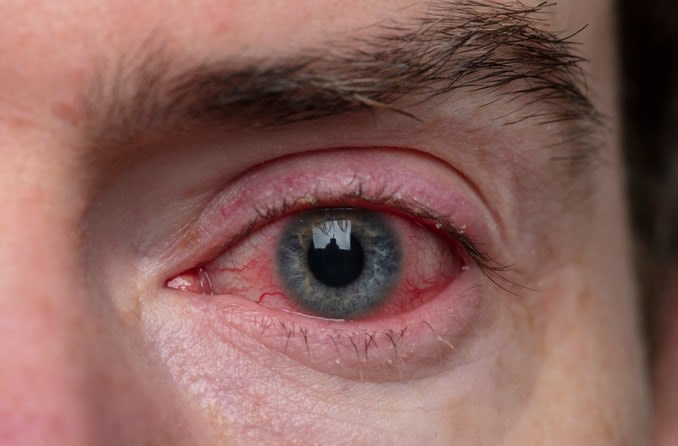Chronic pink eye (chronic conjunctivitis)

When conjunctivitis continues for more than four weeks, it may be diagnosed as chronic conjunctivitis, sometimes known as chronic pink eye. Usually, conjunctivitis lasts one to two weeks.
Several things can cause chronic pink eye, including chronic eye infections and long-term inflammation due to a secondary illness or disorder.
Here are some of the most common forms of chronic conjunctivitis:
Chronic allergic conjunctivitis
Also called perennial allergic conjunctivitis, chronic allergic pink eye is a relatively common condition. It can have different levels of severity, but it tends to be mild and is rarely serious.
Symptoms of chronic allergic conjunctivitis may include:
Itchy eyes
Tearing
Swollen eyelids
Unlike viral pink eye and bacterial conjunctivitis, allergic conjunctivitis is not contagious. Treatment can include oral allergy medicine, antihistamine eye drops, or, in more severe cases, steroid eye drops.
SEE RELATED: How do I get rid of pink eye?
Chronic bacterial conjunctivitis
Certain bacteria can cause chronic eye infections.
A disease called trachoma is relatively uncommon in the United States; it’s more common throughout developing countries in other parts of the world. It’s caused by the non-sexually transmitted bacteria Chlamydia trachomatis and can result in eye scarring, and, eventually, decreased vision.
Gonococcal conjunctivitis is contracted through the sexually transmitted bacteria Neisseria gonorrhoeae. It’s most often seen in newborns when the mother has an active gonorrhea infection, but it can also be seen in adults.
Recurring eye infections can also be a secondary symptom of blepharitis, which is discussed in the next section.
Treatment will vary on a case-by-case basis, but it often includes some form of antibiotic medicine.
SEE RELATED: Chlamydial conjunctivitis
Blepharitis or meibomitis
Inside each of our eyelids, we have numerous tiny glands that secrete oil onto the surface of our eyes. These are called meibomian glands; they add an oily lubricant to our natural tears to keep our eyes comfortable.
A condition called blepharitis can flare up when dead skin cells build up at the base of the eyelids, affecting the oil glands.
Meibomitis occurs when meibomian glands become clogged with hardened oils instead of skin cells.
Both of these disorders can cause eye redness and irritation to the white part of the eye. They are often secondary symptoms of a larger skin disorder, such as atopic dermatitis or acne rosacea.
Chronic giant papillary conjunctivitis
While there isn’t technically a chronic form of giant papillary conjunctivitis (GPC), it can be chronic in nature.
Contact lens irritation is the most common cause behind GPC, but other irritants can be at the root. Contact lens solution, prosthetic eyes, corneal scars and surgical stitches can also lead to the condition. It can recur and become chronic if the irritation source is unavoidable or isn’t drastically reduced.
Treating chronic conjunctivitis
Treatment for chronic pink eye can vary widely depending on the type of conjunctivitis you have.
The first step is to visit an eye doctor, who will ensure your conjunctivitis is properly diagnosed and treated.
While some home remedies for pink eye may relieve minor symptoms, you should always consult with your doctor before trying anything new.
You can potentially avoid catching conjunctivitis by following these pink eye prevention tips.
Page published on Tuesday, August 25, 2020






